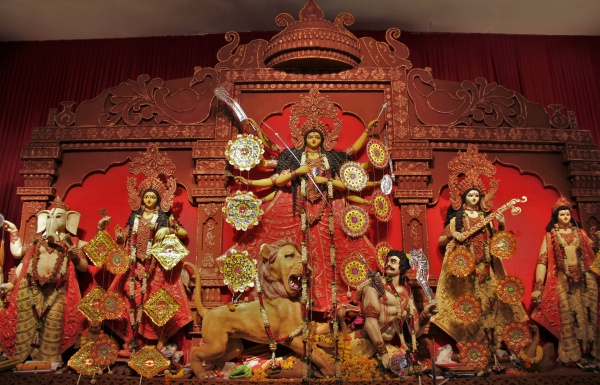Facts About Durga Puja
Durga Puja, also known as Durgotsava, is a vibrant and joyous annual Hindu festival dedicated to the goddess Durga. Celebrated predominantly in Indian states such as West Bengal, Assam, Bihar, Tripura, and Odisha, it also extends to countries like Bangladesh and Nepal. This grand festival typically occurs in the Indian calendar month of Ashwin, which corresponds to September-October, and spans ten days, with the last five days holding the most significance.
The festival is an amalgamation of rituals, scripture recitations, performance arts, public processions, feasting, and gift-giving. At its heart, Durga Puja symbolizes the triumph of good over evil, commemorating the goddess Durga's victory over the demon Mahishasura. It coincides with other celebrations like Navaratri and Dussehra in different regions of India.
During Durga Puja, devotees also worship other deities such as Lakshmi, Saraswati, Ganesha, and Kartikeya. The festivities include the crafting of intricate clay idols of these gods, decorating temporary stages known as pandals, and ceremonially immersing the idols in water bodies at the festival's conclusion.
The origins of Durga Puja date back to ancient times, with guidelines for the puja found in 14th-century manuscripts. Over the years, the festival has evolved into a major socio-cultural event, becoming an integral part of Indian culture. It’s not just a religious observance but also a time for community bonding and artistic expression.
Durga Puja also holds political and economic importance. Political parties often sponsor celebrations, and the festival has a notable impact on the local economy, driving business and tourism. Beyond India, Durga Puja is celebrated by Bengali communities in countries such as the United States, Hong Kong, and various European nations, where they organize elaborate festivities.

 Nepal
Nepal